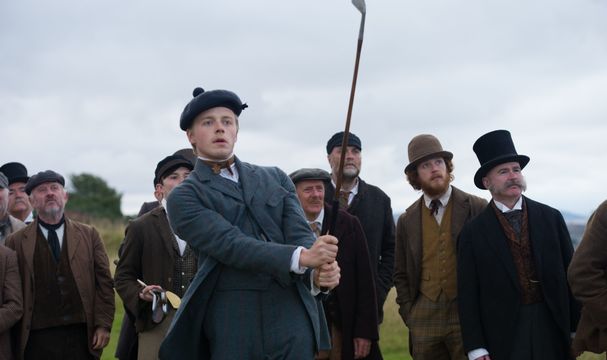
The director talks to BHT about how “Old” Tom Morris and his gifted son transformed the game
It’s a rowdy match at the Musselburgh Links in East Lothian. “Old” Tom Morris (Peter Mullan), one of the founders and four-time winner of the Open Championship, lines up his shot, ignoring the drunk, laughing men surrounding him. Some cheating eejit deliberately kicks his ball into a bunker before cursing Tom’s partner, and son, the preternaturally gifted “Young” Tommy Morris (Jack Lowden): “Bugger off, you champion golfer of shite!” “Go back to Fife!” Soon, punches are flying, much to the crowd’s delight, and Tommy’s brawling in the sand. If not for the rough-looking fairways and the wooden clubs, you’d think they were at a pub rather than playing the gentleman’s game in 1870.
“That’s how it was back then,” says director Jason Connery. “The crowds were very much viscerally a part of it. Though gentlemen set up the games, the players were working-class men. Guys were gambling and drinking and smoking during the matches and, quite often, fighting. Not at all like now."
Based on the 2007 book of the same name, Tommy’s Honour tells the tale of two Scottish golf legends who transformed the sport. For its premiere, the film opened the 2016 Edinburgh Film Festival and will have a US release on April 14. In 19th-century Scotland, a society still very much divided by class, the elder Tom was content to act as caddy and coach for the posh gents who sponsored the tournaments and placed bets. The son of a weaver who started out as an apprentice golf-ball maker, he settled for a fraction of the winnings. His son, however— still the youngest golfer to ever win the Open Championship—had the confidence of the gifted. He wanted more. “Your place is here,” his father replied.

NEIL DAVIDSON
The director confesses that the generational tale of golf’s founding father and son appealed to him personally—as someone who loves playing it with his own father: Sir Sean Connery. “Yeah, I mean, there are some parallels, of course,” Connery admits in an accent that sounds gentler than his father’s. “I’m directing now, but I was acting and my father, of course, is a very well-known actor.” Also, golf was a big part of their bond as he was growing up. “He loves to play. When he wasn’t working, he would play. It was almost out of necessity that I started playing. Otherwise, I would never have seen him.”
Thankfully, strolling beautiful links lends itself to bonding. “In other sports, you’re running around, hitting the ball back. Very little chance for conversations. [In golf] you’re walking. You have a chance to talk.”
Tom the elder is partly responsible for that—for the beautiful courses we know today. He widened fairways for increased play, improved greens and created larger play areas for a great walk unspoiled, improved, made into magic. He was the designer of many courses throughout Scotland and other parts of Britain—“Over 70,” says Connery—including Carnoustie, Prestwick and Muirfield and Royal Dornoch. As the “father of modern greenkeeping,” he invented, or perhaps discovered, top-dressing the greens with sand. “There were only 13 rules of golf when Tom started, but it was catching fire, filling in,” the director adds. Tom introduced the concept of actively managing hazards and standardized courses at 18 holes. “He cemented certain elements of the modern game.”
Tommy, who died at the height of his career, just seven short years after his first Open Championship win, also changed golf forever, but as a player—a trailblazer who won the Open four times consecutively and insisted players receive their proper due. “He broke down barriers and the whole of the professional sporting world owes him a debt. He was the first pro athlete to say, ‘I don’t understand why we’re getting such a small fee when everybody is coming to see us!’” says Connery. The young star demanded a greater share and more control from the captain of the Royal and Ancient Golf Club of St. Andrews, played with perfect indignation by Sam Neill: “In your father’s time that would have earned you a lashing!”
[caption id="TheTeesThatBind_img2" align="aligncenter" width="793"]

NEIL DAVIDSON
Watching the sport evolve at a critical time in its history will delight golfers as much as a perfect swing: clubs appearing with grooves for the first time, Tommy amazing his friends by putting backspin on a ball, even Tommy competing against an archer who shoots with a bow—inspiring him to imagine a golf bag after making note of the man’s quiver: “Dad, a golf quiver [to hold clubs]. The caddies will love you for it!” (Yes, Tommy Morris did actually play a match against an archer who shot arrows around the links.)
[caption id="TheTeesThatBind_img3" align="aligncenter" width="901"]

NEIL DAVIDSON
“He broke down barriers, and the whole of the professional sporting world owes him a debt. He was the first pro athlete to say, ‘I don’t understand why we’re getting such a small fee when everybody is coming to see us!’”
Still, for all the innovations that appear in Tommy’s Honour, the sheer passion the players have for the game is why viewers will cheer, just as the crowds did for the pair after a major win.
“One game, in particular, in North Berwick, there were 7,000 people watching and they were very much the townsfolk and from around the country in Scotland—some from other towns and even the rest of Britain,” says Connery. In this scene, the crowds have finally grown so large that they need to be held back with ropes, as they would be today. “These guys were, in some ways, their heroes,” says the director, “but they didn’t have any sense of their legacy. They just loved the game.”
Tommy’s Honour opens across the country on April 14.
[caption id="TheTeesThatBind_img4" align="aligncenter" width="588"]

ADOBE STOCK; CHRISTIES AUCTIONS
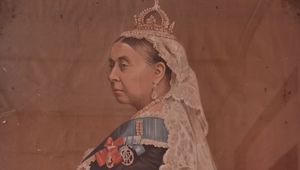

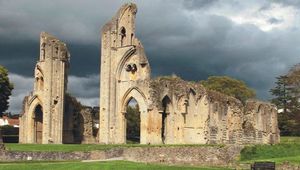

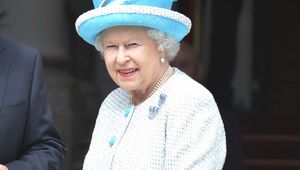
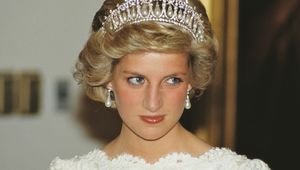

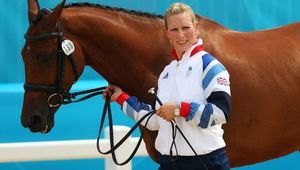


Comments